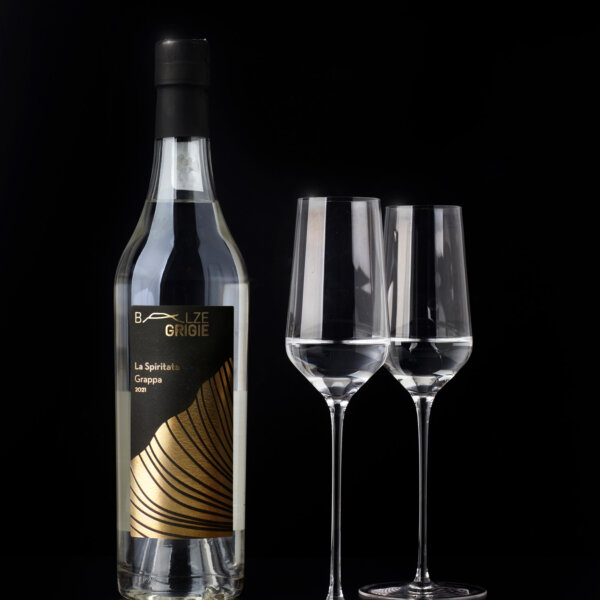Restoring the land
Our vineyards are perched high on impervious, vertical mountainous slopes, making mechanized winegrowing or harvesting impossible. Everything is done strictly by hand, as it always has been in these mountain vineyards. This is a form of ‘extreme viticulture’ that involves high costs to set up and manage, and generally produces smaller yields.
Our first vineyard
2005 - The PUA vineyard (“First love”) - Frazione Pianazzòla
Great-grandmother Margherita’s vineyard was our first project. We began by clearing the land, then reinstating and securing the original terraces, before creating a new layout and planting the vines.
Tucked away from the rest of the mountainside, this area is particularly sunny and situated where the land forms a natural terrace.
| Altitude | 595 m |
| Gradient | 58% |
| Exposure | South – Southeast – Southwest |
| Surface area | 2.358 sq. m (0.58 acres) |
| Grape varieties | Lagrein – PIWI Souvignier Gris |
Our second vineyard
2011 - Site La Sbogada ("Middle vineyard") - Chiavenna
After the lengthy and arduous task of reconstructing the complex division of the various properties, we were able to reclaim the land and replant the vines.
| Altitude | 590 m |
| Gradient | from 65% to 84% |
| Exposure | Southeast |
| Surface area | 3.118 sq. m (0.77 acre) |
| Grape varieties | Lagrein, Nebbiolo, Gewurztraminer |
Our third vineyard
2014 - "Mons Sancti Johannis" - Locality San Giovanni - Chiavenna
Through some mutual friends, an opportunity arose in 2014 to purchase a larger piece of land just outside the village, from an owner who was no longer resident in Chiavenna.
From our very first meeting we realized that the owner not only wanted to sell the land, but he also had a wish: to see a historic former vineyard restored to its former glory. We at once felt we shared the same purpose and became friends. In addition to this piece of land, we bought another, smaller neighbouring vineyard that had been in use until more recent times.
Overall, this was a particularly challenging reclamation project due to the dense, ongoing regrowth of trees. A number of measures were required, including building a path running between the various terraces, making them easier to access with a minimum of mechanization.
Nowadays, of course, it would be unthinkable to only rely on the picturesque yet narrow, impossibly steep stone steps to reach the terraces, as people used to.
The work here lasted two years. During this time we discovered, through research into local history, that this vineyard’s origins date back to the 12th century.
We decided to plant this historic, charming vineyard with a prestigious, delicate grape variety: Pinot Nero.
This was undoubtedly a huge challenge, but an exciting one too.
| Altitude | 393 m |
| Gradient | from 35% to 60% |
| Exposure | Southeast |
| Surface area | 10.371 sq. m (2.56 acres) |
| Grape varieties | Pinot Nero |
Our fourth vineyard
2011 - “Mùnech's vineyard” - Gordona
| Surface area | 1.232 sq. m (0.3 acres) |
| Grape varieties | Souvignier Gris |


